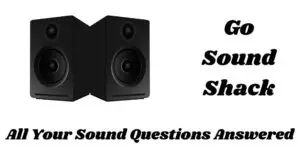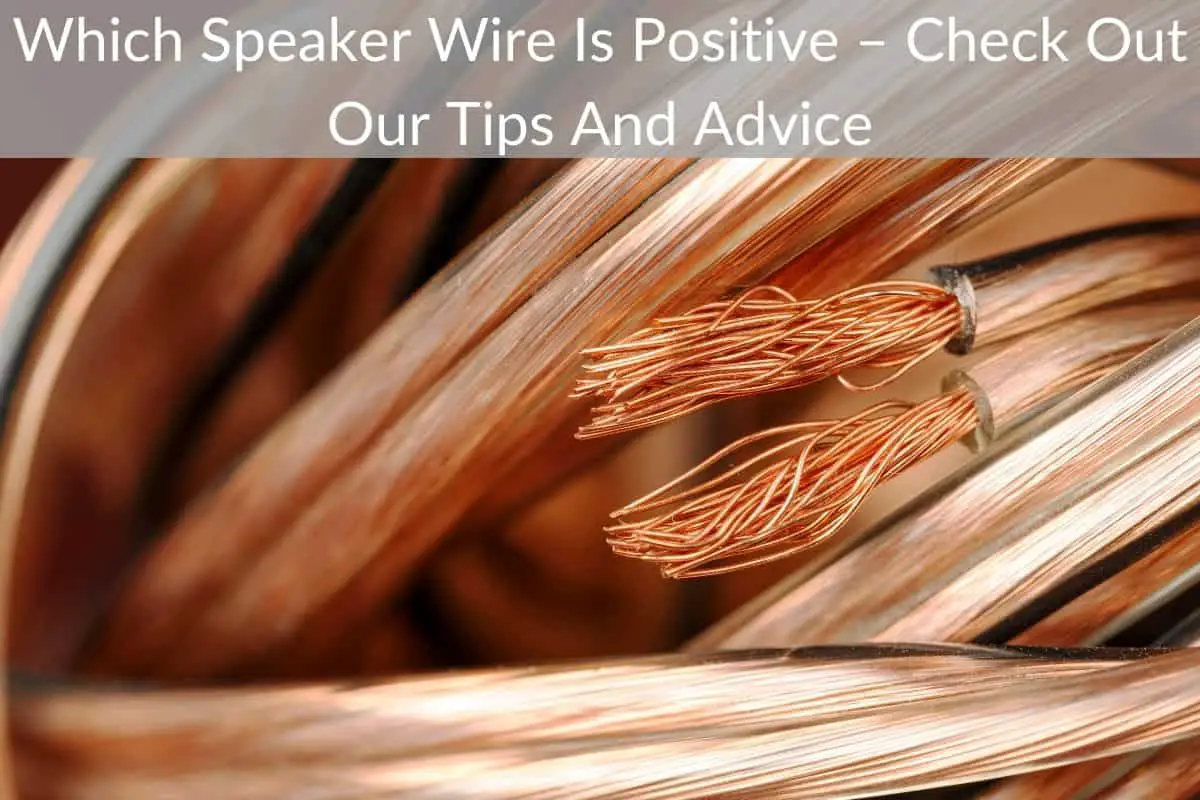Table of Contents
Speaker wires give us extra options for where to place our speakers. There are a few different speaker wires; there are different gauges to fit different speaker sizes and different cables depending on where one would like to place them. Most market speakers do not come with these wires but they all have the capabilities to plug into them. This means that the choice for which gauge or type of wire is completely up to us as the consumer. Unfortunately, choosing the correct wires is not as straightforward as it may seem because of all the options out there. Fortunately, helpful guides such as this one exist to assist those wanting to better their music-listening abilities!
*This post may contain affiliate links. As an Amazon Associate we earn from qualifying purchases.
Why Would I Want To Invest In A Speaker Wire?
There have been many debates over the years behind what speaker wire to use and whether the wire connection between an amplifier and a speaker changes or improves the sound of the music. Many blind tests have been conducted as well as sighted evaluations, and the short answer is that it absolutely improves the sound quality. The reason for this can be found in the impedance of the speaker. Impedance refers to the effective resistance of an electric circuit or component to an alternating current.

The impedance of a speaker will naturally differ depending on the particular frequencies that the speaker is putting out. A wire, however, has a fixed impedance. If a wire has over 5% of the lowest impedance of a speaker, that dip in response will be heard.
With all speakers and wires, there needs to be a substantial interaction between the speaker and the wire. The location and depth of the dips in the frequency response depend on the impedance of both items. Since the impedance of any speaker fluctuates so heavily, we should rely on the impedance of the wire which depends on the size or gauge of wire.
The higher the gauge number of the wire, the thinner it is. A twelve-gauge wire will be twice the diameter of a twenty-four gauge. The goal of any speaker and wire combo is to obtain absolute synergy between the two. How would one do this? England may have the answer for us.
For a while, there was much debate over the fact that a thin, single conductor, twisted pair wire sounded ten times better than a thicker multi-stranded wire. Puzzled over why this would be, many blind tests and sighted evaluations were conducted that all consistently reached the same result. Researchers concluded that the extra resistance given by the thinner wire changed the balance of the speakers in a positive way: the bass went up, and the treble came down.
The thinner wire was used in many speakers and was shown to improve some vented systems if they were booming overwhelmingly at the vent resonance. With this information in hand, researchers in England once again took the thicker, multi-stranded wire and equipped it with a resistor of the correct value. Since doing that, the researchers could get the same satisfying sound results as with the thin wire.
Mr. Noel Lee was responsible for bringing this genius to the general population. His introduction of the twelve-gauge “MonsterCable” vastly improved the sound of almost every vented system on the market.
How Many Types Of Speaker Wires Are There?
The question of what speaker wire to use is a more involved and convoluted question than most consumers are used to. There are so many gauges and types of wire, and each has different use cases depending on the speaker setup. One can purchase speaker wires with connectors or without, UL-rated speaker wires labeled CL2 or CL3 for in-wall or ceiling speakers, or speaker wires rated for direct burial to run a wire underground for a set of outdoor speakers.
What speaker wire to use also depends on which gauge one should use. The options are 12 gauge, 14 gauge, 16 gauge, and 18 gauge. The higher the number, the smaller the wire is.

For the long wire runs, high power applications, and low-impedance speakers of around four or six ohms, thicker wire is more recommended for durability over distance. This is why the 12 and 14 gauge wires are recommended for these projects.
For shorter runs that are less than fifty feet and connecting to eight-ohm speakers, the most cost-effective and worry-free option would be to go with the 16 gauge wires.
For a quick reference guide, a 12 gauge speaker wire is ideal for an Ampacity of 25 to 20 amps for 50 feet or fewer, or 18 to 15 Amps for greater than 50 feet. A 14 gauge wire is best used for an Ampacity of 18 to 15 Amps for less than 50 feet or 13 to 10 Amps for greater than 50 feet. A 16 gauge speaker wire would be the best choice for 13 to 10 Amps at less than 50 feet, and 10 to 7 Amps for over 50 feet. An 18 gauge wire is most beneficial for 10 to 7 Amps at less than 50 feet and 7 to 5.6 Amps at over 50 feet.
When looking at this chart, one can easily see a pattern take place.
So, What Type/How Much Wire Will I Need?
What speaker wire to use will also depend on one’s particular speaker setup and how far away the speaker is from the connection point. Luckily, it’s simple to figure out what length of wire one will need for their speaker. To figure this out, all one has to do is run a string from the receiver or amplifier location to the speaker or speakers locations. Once they are sure the string has an ample length to get from one point to the next, one only needs to measure the string and add a few extra inches for some slack. Providing this slack will help one get an easier connection without worry of stretching the wires too tightly.
As mentioned earlier, one can purchase wires with connectors or without. Experts strongly recommend that anyone who buys wires that do not come with connectors should buy separate banana connectors, which is a single-wire electrical connector used for joining wires to equipment. Choosing to go without the connectors and attaching the bare wire ends to complicated setups such as home theatre systems can prove to be a real pain in the behind.
If one is looking to connect to speakers by running the wires through the walls or ceiling, they will want to invest in some UL-rated speaker wires that have either a CL2 or CL3 rating. These ratings are cable jacket fire resistance ratings, and they show that the cable is suitable for the desired in-wall installation for low-voltage applications. These CL-rated wires are available on the market with two conductors or four.
The four-conductor installation is the easier and more desirable installation tactic, as it will allow one to pull a single cable over a long distance from the amplifier connection point to an in-wall volume control in a separate room. Once this has been accomplished, one can run a few two-conductor cables from the volume control to each of the stereo speakers in that location. Four-conductor wires are also beneficial for stereo-input speaker connectivities.
There is much debate over whether one should spend a few extra dollars on high-end speaker cables rather than going with the cheapest option available. The consensus is that most people hear the quality and sonic improvements in the construction and audio.
Connection Tips And Advice
Now you know what speaker wire to use for your specific setup, there are a few things to keep in mind during the physical setup process. It is important that one takes the time to identify the positive and negative ends of the wires because if even one connection is crossed, it will cause the music to sound distorted.
If one goes the no-connectors route, it will prove beneficial to use a wire stripper to cut about 3/8 of an inch off of the plastic end, exposing the bare wire. This will allow one to twist the wire strands to ensure there are no loose threads as these could cause short circuits and become potentially damaging.
One last thing one should be familiar with is the speaker wire terminals. There are spring clips that make inserting the wire easy; press down on the clip and put the wire in. Releasing the clip will cause it to hold the wire securely in place. It is important to note that these clips will not work with spade connectors, banana plugs, or dual banana plugs.
Binding posts are another type of speaker wire terminal, and they provide a more solid connection. These require one to unscrew the collar and put the connectors in the hole.

What Speaker Wire to Use – Conclusion
Adding speaker wires to one’s at-home setup can be a meticulous and involved process, but the results are more than worth it. Since there are so many gauge sizes and types of wires depending on one’s particular setup, we hope we have made the search for the right speaker wireless intimidating. We hope our advice helps you make a world of a difference in your speaker system. We certainly believe the right wires for the right speakers will double the enjoyment and sound quality of any setup!

